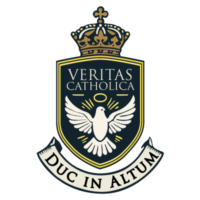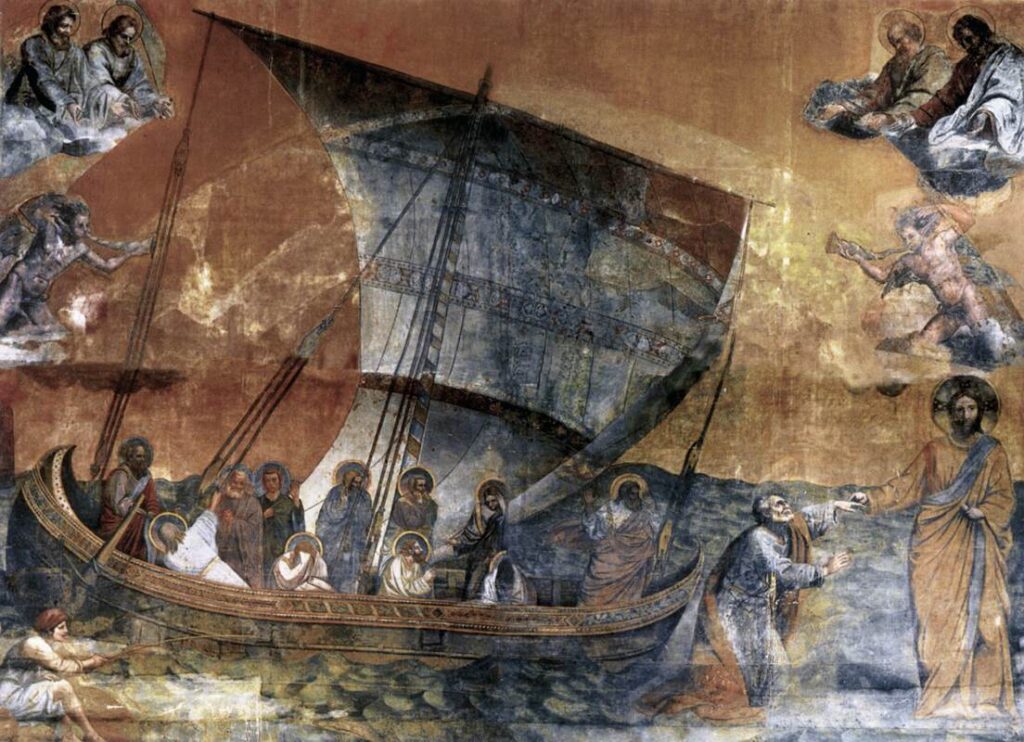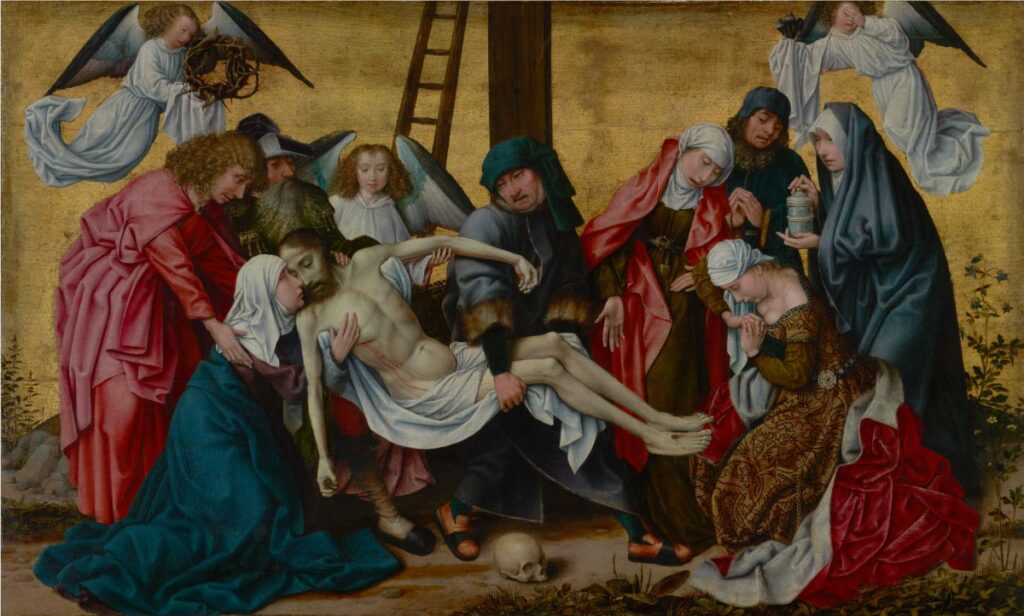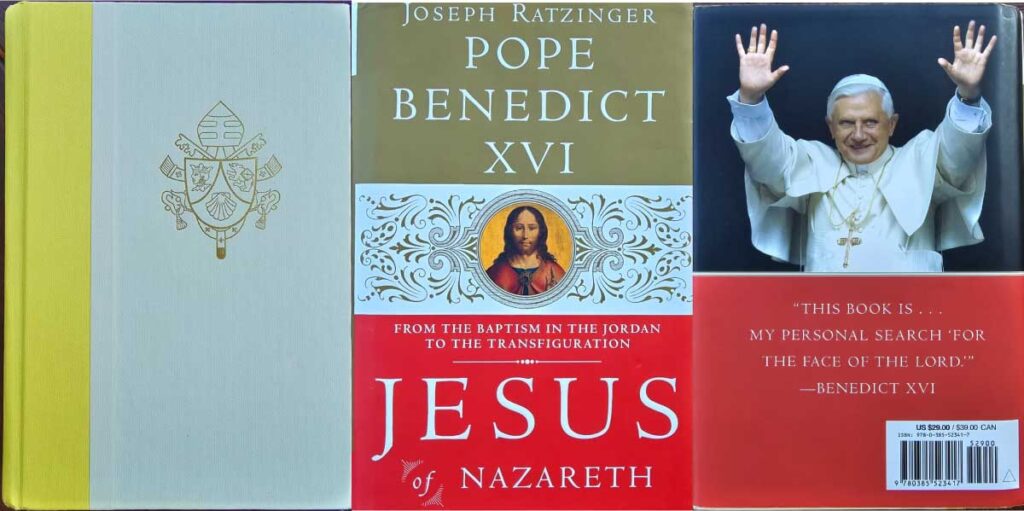You cannot have God for your Father if you do not have the Church for your mother… He who gathers elsewhere than in the Church scatters the Church of Christ.
Introduction
The notion that Christ established His Church on Earth, entrusting it to the leadership of Peter and the Apostles, is foundational to Catholic theology. This understanding stands in contrast to the modern idea that each person can independently decide their path in following Christ, effectively becoming their own church. To address this debate, we can draw upon biblical evidence, the symbology and typology of Mary, and the writings of the early Church Fathers to demonstrate that the early Christian community was inherently communal and hierarchical, rejecting the notion of a purely individualistic faith.
Christ Establishing His Church
One of the clearest biblical foundations for the establishment of a structured Church is found in Matthew 16:18-19:
And I tell you that you are Peter, and on this rock I will build my church, and the gates of Hades will not overcome it. I will give you the keys of the kingdom of heaven; whatever you bind on earth will be bound in heaven, and whatever you loose on earth will be loosed in heaven.”
In this passage, Jesus explicitly names Peter as the rock upon which He will build His Church, signifying a foundational role. The giving of the “keys of the kingdom” and the authority to bind and loose denotes a specific, entrusted authority to govern the Church.
In ancient times, keys symbolized authority and control, particularly over an estate or kingdom. The phrase “keys of the kingdom” would be understood by the contemporaries of Jesus as a powerful symbol of authority and stewardship. For instance, in Isaiah 22:22, the key of the house of David is given to Eliakim, symbolizing his authority over the kingdom. Similarly, giving Peter the keys signifies granting him authority over the Church.
The modern ceremonial gesture of presenting someone with the “keys to the city” reflects this ancient understanding, symbolizing trust and the conferral of honor and authority. Thus, Jesus giving Peter the keys indicates a clear establishment of leadership and governance.
The setting of this declaration at Caesarea Philippi is significant. The region was known for its towering rock face and its association with various pagan temples, including a shrine to the god Pan. By choosing this location, Jesus’ words about building His Church on “this rock” resonate with profound symbolism. The physical rock face behind Him would have visually reinforced the metaphor of Peter as the foundational rock.
The name change from Simon to Peter (Petros in Greek, Kepha in Aramaic) is also significant. In both languages, the name means “rock.” This change signifies Peter’s new role and identity. The Aramaic term Kepha, used by Jesus, is a direct affirmation of Peter’s foundational role, as Aramaic was the language spoken by Jesus and His disciples. This linguistic detail underscores the intentional and explicit nature of Peter’s commission.
Authority of the Apostles
While Peter is given a unique role, the authority of the apostles collectively is also affirmed. In John 20:21-23, Jesus breathes on the disciples and says:
“As the Father has sent me, I am sending you.” And with that, he breathed on them and said, “Receive the Holy Spirit. If you forgive anyone’s sins, their sins are forgiven; if you do not forgive them, they are not forgiven.”
This act of breathing the Holy Spirit upon the apostles and granting them the authority to forgive sins establishes the sacrament of reconciliation and underscores the communal and apostolic nature of the Church’s authority. It demonstrates that the governance of the Church and the administration of sacraments are to be carried out by a divinely instituted leadership, rather than by individuals independently.
Early Christian Practice and Writings
The practice of the early Christian community, as well as the writings of the Church Fathers, provide concrete evidence against the idea that early Christians believed in a purely individualistic approach to faith.
The practice of breaking bread together, which is the celebration of the Eucharist, was central to early Christian worship. This communal act was not merely a fellowship meal but a liturgical act that signified unity and participation in the body of Christ. Acts 2:42-47 describes the early Christians:
“They devoted themselves to the apostles’ teaching and to fellowship, to the breaking of bread and to prayer. … All the believers were together and had everything in common. … Every day they continued to meet together in the temple courts. They broke bread in their homes and ate together with glad and sincere hearts.”
This passage highlights a unified, communal worship centered on the apostles’ teaching and the breaking of bread, which is the Eucharist. This unity under apostolic teaching precludes the notion of individualistic faith where each person is their own authority.
Apostolic Succession and Church Authority
The early Church Fathers provide robust evidence for a structured Church with a clear hierarchy and apostolic succession. Here are some pertinent quotes and their implications:
Ignatius of Antioch (c. 35-107 AD)
Ignatius, a direct disciple of the Apostle John, emphasized the importance of unity under the bishop. In his letter to the Smyrnaeans, he writes:
“See that you all follow the bishop, even as Jesus Christ does the Father, and the presbytery as you would the apostles; and reverence the deacons, as being the institution of God. Let no man do anything connected with the Church without the bishop.” -Smyrnaeans 8:1
This quote underscores the hierarchical nature of the early Church and the authority of the bishop as a focal point of unity and governance, rejecting any notion of a purely individualistic faith. Ignatius’ insistence on following the bishop as one would follow Christ Himself reflects a profound commitment to a structured ecclesial community.
Irenaeus of Lyons (c. 130-202 AD)
Irenaeus, in his work Against Heresies, speaks extensively about the importance of apostolic succession and the authority of the Church:
“It is within the power of all, therefore, in every Church, who may wish to see the truth, to contemplate clearly the tradition of the apostles manifested throughout the whole world; and we are in a position to reckon up those who were by the apostles instituted bishops in the Churches, and [to demonstrate] the succession of these men to our own times…” -Against Heresies, Book III, Chapter 3, Section 1
Irenaeus points to the unbroken line of bishops as a testament to the Church’s authority and continuity from the apostles. This continuity precludes the idea of individuals operating independently of this established structure. His argument for apostolic succession as a means to preserve true doctrine further highlights the importance of a unified and hierarchical Church.
Cyprian of Carthage (c. 200-258 AD)
Cyprian’s writings further emphasize the necessity of unity with the Church and its leaders:
“There is one God and one Christ, and one Church, and one chair founded on Peter by the word of the Lord. It is not possible to set up another altar or for there to be another priesthood besides that one altar and that one priesthood. Whoever gathers elsewhere scatters.” -On the Unity of the Church, Chapter 4
Cyprian’s emphasis on the singularity of the Church and its foundation on Peter underlines the importance of unity and hierarchy. His stark warning against setting up another altar or priesthood outside the established Church highlights the error in the notion of individualistic faith.
The Didache (1st century)
This early Christian document, possibly dating from as early as the first century, offers practical instructions for Christian communities, further evidencing a structured approach to faith:
“Appoint for yourselves therefore bishops and deacons worthy of the Lord, men who are meek and not lovers of money, and true and approved; for unto you they also perform the service of the prophets and teachers.” -Didache 15:1
The Didache provides clear evidence that the early Christian communities understood the importance of appointing leaders, reflecting a structured and communal practice rather than an individualistic one. The emphasis on the qualities required of bishops and deacons illustrates the early Church’s focus on maintaining a holy and authoritative leadership.
Mary as Symbol and Typology for the Church
Mary, as a symbol and typology for the Church, provides a profound theological foundation against the idea of an individualistic approach to Christianity. The following aspects of Marian symbolism underscore the communal and hierarchical nature of the Church.
Mary, the Mother of the Church
The title “Mother of the Church” emphasizes Mary’s role in nurturing the faith community. As the mother of Jesus, she holds a unique position in the divine plan of salvation, and by extension, she is the mother of His mystical body, the Church. This maternal role signifies a communal entity rather than a collection of isolated individuals. The Second Vatican Council explicitly referred to Mary as “Mother of the Church,” recognizing her significant role in guiding and nurturing the faithful. This title was formally proclaimed by Pope Paul VI during the closing of the Council, underlining the belief that Mary’s maternal care extends to all members of the Church, echoing her nurturing role in the early Christian community and continuing to the present day.
Mary’s maternal role in the Church underscores the interconnectedness of the Christian faithful, forming a spiritual family under her guidance. This concept aligns with the early Church’s communal nature as depicted in Acts 2:42-47, where believers shared their lives and resources, united by their common faith and the teachings of the apostles. Just as Mary nurtured Jesus, she continues to nurture the Church, fostering unity, guiding its growth, and interceding for its members. This communal identity, modeled on the maternal care of Mary, rejects the notion of a fragmented or individualistic faith, emphasizing instead a collective journey towards holiness and salvation.
Mary as the New Eve
In Catholic typology, Mary is often seen as the New Eve, paralleling Jesus as the New Adam. This comparison is rooted in biblical and theological reflections on the roles of Adam and Eve in contrast with Jesus and Mary. As Eve was the mother of all living (Genesis 3:20), her disobedience brought sin and death into the world. In contrast, Mary’s obedience to God’s will, exemplified in her fiat, (“Let it be done to me according to your word” -Luke 1:38), brought life and salvation through Jesus Christ. This typology emphasizes Mary’s role in reversing the effects of Eve’s disobedience, highlighting her pivotal role in salvation history and underscoring the importance of her example for all Christians.
Mary’s role as the New Eve also reinforces the idea of a spiritual family united under her maternal care. Just as Eve was the biological mother of humanity, Mary, by her obedience and cooperation with God’s plan, becomes the spiritual mother of all Christians. This typology strengthens the communal aspect of Christianity, presenting Mary as a central, unifying figure who brings believers together in faith and love. The early Christians, who often gathered to break bread and share in the Eucharist, would have seen themselves as part of this spiritual family, guided by the teachings of the apostles and united in their devotion to Christ and His mother. This sense of community and unity under Mary’s spiritual motherhood is a powerful counter-argument to the notion of an individualistic approach to Christianity.
Mary and the Church’s Purity and Holiness
Mary’s Immaculate Conception and perpetual virginity symbolize the purity and holiness the Church is called to embody. The Church is often described as the “spotless bride” of Christ (Ephesians 5:27). This image underscores a collective identity aimed at holiness and purity, contrasting sharply with the notion of an individualistic faith where personal autonomy might overshadow communal accountability and sanctity.
Mary’s role in the Church’s purity is not just symbolic but also practical. As the one who brought Christ into the world, she models the Church’s mission to bring Christ to others. Her yes to God (Luke 1:38) serves as a paradigm of faith and obedience for all believers, indicating that true discipleship involves communal faithfulness to God’s will rather than individualistic interpretations of Christianity.
Mary as Intercessor and Advocate
Just as Mary intercedes for the faithful, the Church, through its prayers and sacraments, acts as an intercessor for its members. Mary’s role at the wedding feast at Cana (John 2:1-12) illustrates her powerful intercessory capacity. At Cana, Mary observes the needs of the hosts and, without hesitation, approaches Jesus to ask for His intervention. Her actions lead to Jesus performing His first public miracle, turning water into wine. This narrative underscores Mary’s sensitivity to human needs and her influential role in interceding with her Son. It reflects the broader mission of the Church, which continually intercedes for its members before God, asking for grace, forgiveness, and assistance in times of need.
This intercessory role of Mary and the Church highlights the communal and sacramental dimensions of faith, countering the notion that individuals can entirely bypass these aspects. The Church, seen as a mediator of God’s grace, underscores the necessity of communal worship and sacramental life in the Christian journey. Just as Mary’s intercession at Cana led to a miraculous transformation, the Church’s intercession through prayer and sacraments facilitates spiritual transformation and growth among believers. This communal intercession emphasizes the interconnectedness of the faithful, united under the guidance of the Church and the intercession of Mary, rather than pursuing an isolated, individualistic faith.
Mary as the Bearer of Christ to the World
Mary bore Jesus Christ into the world, and the Church continues this mission by bringing Christ to others through evangelization, the sacraments, and acts of charity. This missionary aspect of the Church is a direct continuation of Mary’s role in salvation history. Just as Mary physically brought Christ into the world through her womb, the Church brings Christ to the world through its teachings, sacraments, and witness. The Church, like Mary, is tasked with nurturing and delivering Christ to the faithful and to the world at large. This mission emphasizes the communal and apostolic nature of the Church, where believers work together to spread the Gospel and embody Christ’s love in their communities.
The Church’s role in continuing Mary’s mission is evident in its commitment to evangelization and service. Through the sacraments, especially the Eucharist, the Church nourishes its members with the Body of Christ, fostering a deep, communal relationship with God. Acts of charity and social justice also reflect the Church’s mission to bring Christ’s love to the world, echoing Mary’s example of selfless service and compassion. This communal and apostolic mission reinforces the idea that Christianity is not an individualistic pursuit but a collective endeavor, inspired and guided by the example of Mary as the bearer of Christ to the world.
Mary’s Assumption and the Church’s Destiny
The Assumption of Mary, which teaches that Mary was taken body and soul into heavenly glory, prefigures the Church’s ultimate destiny. This belief underscores the hope of the Church in the resurrection and eternal life, looking forward to the time when the faithful will be united with Christ in glory. Mary’s Assumption provides a powerful symbol of the Church’s eschatological hope, reminding believers that their journey on earth is directed towards a heavenly fulfillment. This doctrine highlights the communal path to salvation, where the faithful are supported by the intercession and example of the saints, with Mary as a prime example of the final glory that awaits those who remain faithful to God.
Mary’s Assumption also reinforces the communal nature of the Church’s journey towards heaven. As believers look to Mary, assumed into heaven, they see a model of faithfulness and divine reward that inspires them to live lives of holiness and devotion. The communal celebrations of the feast of the Assumption, marked by liturgies and prayers, further underscore the collective nature of the Church’s hope and destiny. This communal aspect of salvation, prefigured in Mary’s Assumption, counters the individualistic view by emphasizing that the journey to eternal life is one that is shared with the whole body of Christ, supported by the sacraments, the intercession of Mary and the saints, and the fellowship of the Church community.
Conclusion
The combined biblical evidence, Marian symbolism, and early Christian writings compellingly argue that Christ did indeed establish a structured Church on Earth, entrusting it to the leadership of Peter and the Apostles. This Church was intended to be a communal, hierarchical body that embodies the faith and teaching of Christ, rejecting the notion of a purely individualistic approach to Christianity. Mary’s role as a symbol of the Church further reinforces this communal and structured identity, guiding the faithful as a mother and intercessor. The writings of the early Church Fathers and documents like the Didache provide historical evidence of a unified, apostolic community that valued hierarchy and communal worship, demonstrating that from the very beginning, Christianity was never meant to be a religion of isolated individuals but a unified body of believers under the guidance and authority of the Church.



